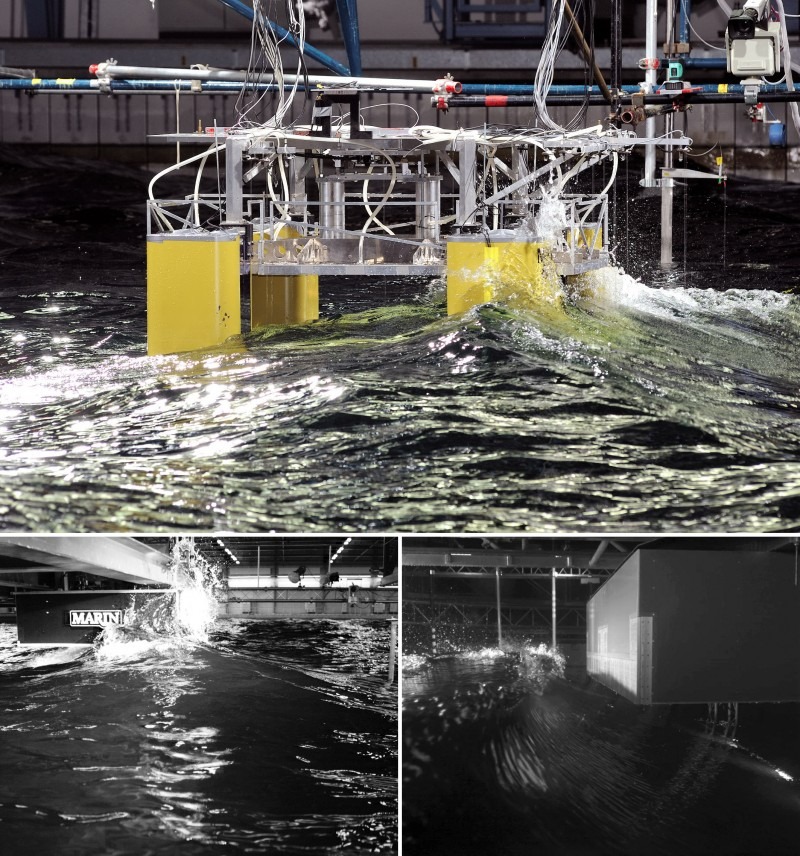Wave-in-deck assessment of a floating rig in a harsh environment
The BreaKin JIP (2016-2018) and its successor BreaKin CFD JIP (2019 2021) are good examples of industry collaboration working to solve the wave-in-deck problem. The projects zoom in on the specific topic of the kinematics in the wave crest and the subsequent violent flow physics at the moment that the top of the crest hits a lower part of the elevated deck. The actual impact takes place in a fraction of a second.
The main question is how high the load peak will be and at what probability of occurrence. In the first project, extensive model tests were carried out in MARIN’s Depressurised Wave Basin at two different scales (1:25 and 1:50) in atmospheric, as well as depressurised conditions to quantify scale effects. This research was needed to better understand how entrapped air in the wave crest influences the peak pressure at the moment of impact.
In the second project, groundbreaking CFD calculations are deployed to better understand the violent flow physics of the mixture of air and water. The idea is that CFD, in spite of ‘just’ being a model, provides a more suitable approach when evaluating the effect of subtle individual parameters such as air fraction and bubble size. Moreover, the CFD approach provides an opening towards the assessment at full scale, something that can never be realised in a laboratory setting.
Jaap de Wilde | j.dewilde@marin.nl



